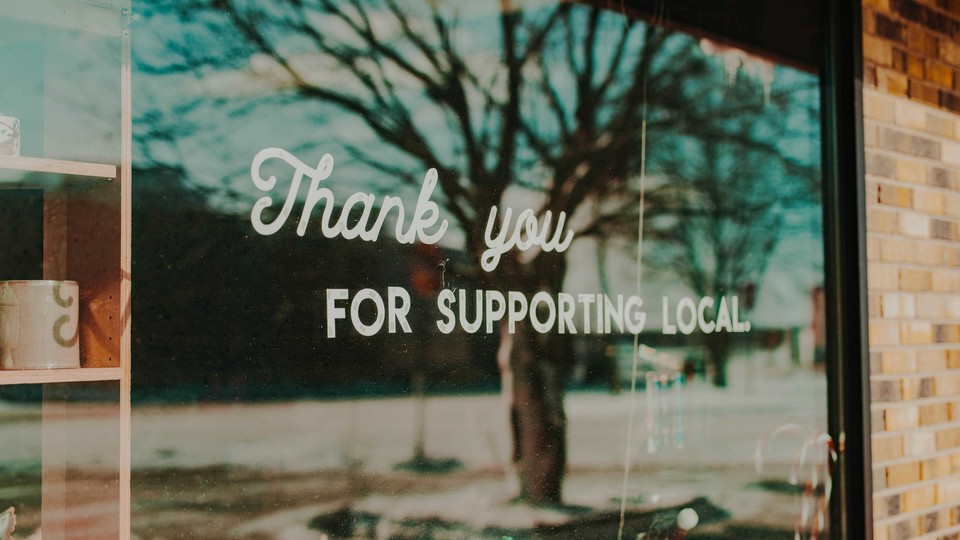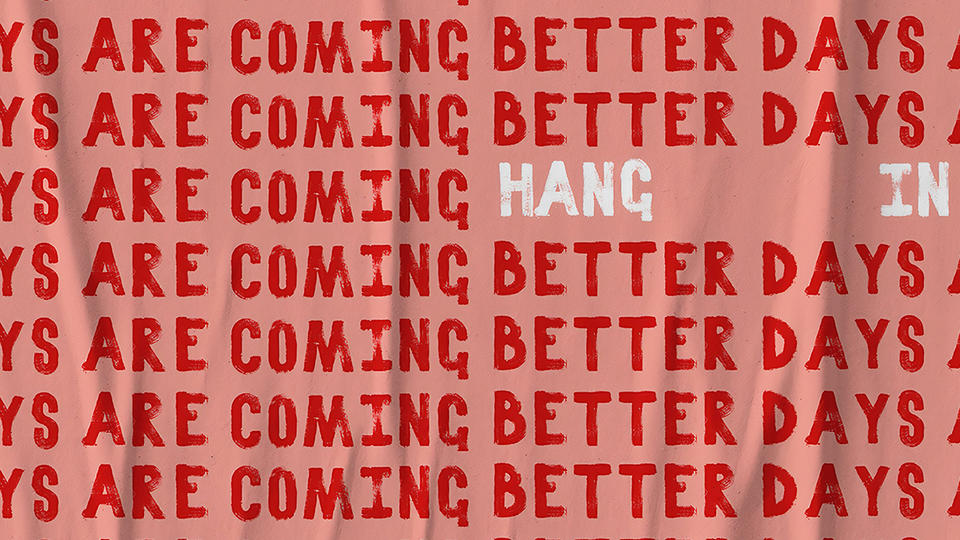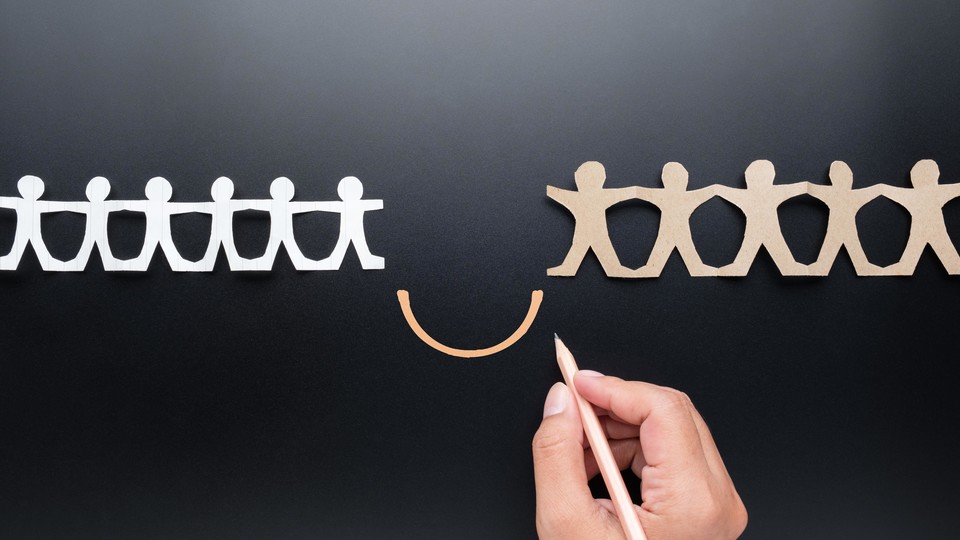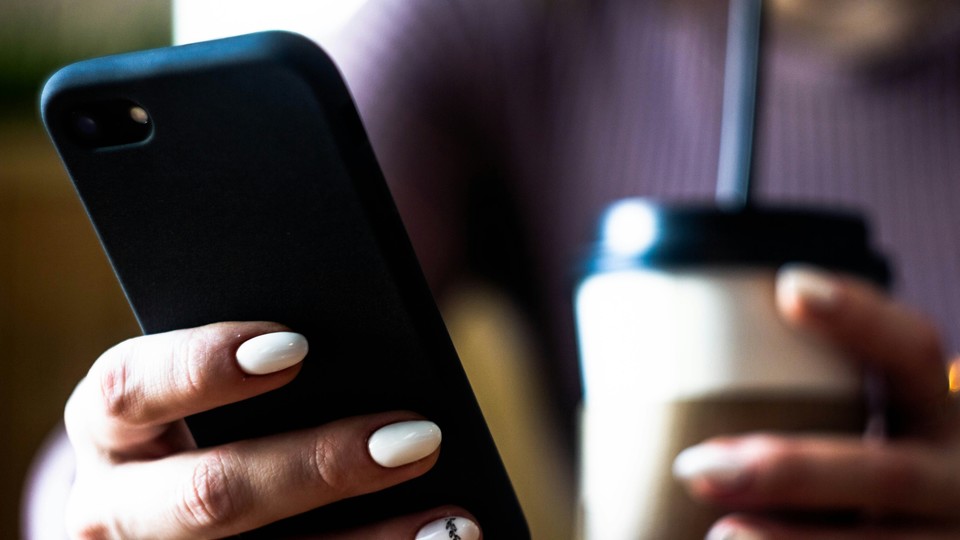Happy Campers
To build long-term value, keep customers — and employees — satisfied.


Based on research by Vikas Mittal, Yan Anthea Zhang and Christopher Groening
To Build Value For The Long Term, Keep Customers — And Employees — Satisfied
- To succeed, a firm must treat its customers and its employees well. Both groups are important stakeholders.
- Investors rely on observable measures of how a firm treats its employees and customers as “signals” of true firm value.
- Consistency is critical for investors: Customer satisfaction is more positively valued when matched by employee satisfaction, and vice versa.
Three prepared organic meals a day, personal-fitness classes, health clinics, on-site oil changes, haircuts, nap pods and a spa truck.
No, we’re not talking about a retirement community in Boca. If you work for Google, this is your workplace. In 2015, for the seventh time in a decade, Google placed first in Fortune’s “Best Companies to Work For.” If you are an employee, you want to work for a company like Google.
And if you are a customer? You might look to Amazon, which topped USA Today’s 2015 list for best customer service – its sixth consecutive year at number one.
“We’re not competitor obsessed, we’re customer obsessed,” Amazon founder and CEO Jeff Bezos has said. “We start with what the customer needs and we work backwards.”
So employees want to work for Google. Customers want to shop with Amazon. But what about investors?
Sure, investors crunch the numbers. They look at balance sheets and income statements. They even hire bright-eyed MBA graduates to dig deep into SEC filings and search the footnotes for any informational advantage.
However, in addition to the quantifiable data, investors also rely on a firm’s observable characteristics and activities as cues to filter and sort in terms of value. In other words, how firms treat their employees and customers can be used as “signals” by investors in their assessment of firm value.
For example, employee perks, such as a profit-sharing program, can make a firm more valuable in the eyes of investors. Customer-related benefits, like the development of a better product following a successful R&D effort, can provide a similar boost. In contrast, lapses with employees or customers can undermine investors’ valuations. Large-scale layoffs (which negatively affect employees) or product-safety recalls (which alienate customers) send negative signals to investors about a firm’s long-term competitive advantage.
But how do investors make sense of multiple or conflicting signals? Recent research coauthored by Rice University professors Vikas Mittal and Yan Anthea Zhang explores the way investors take in the big picture.
The results show that when a firm consistently pleases both employees and customers, its long-term value increases. But if firms are inconsistent, making their customers happy but not their employees, or vice versa, investors will discount the success. This “cross-validation” effect is even more pronounced for businesses with a narrow business scope. (For example, 1-800-FLOWERS as opposed to General Electric.)
What does the cross-validation effect mean for firms? It means that marketing and human resources executives shouldn’t work in isolation, but coordinate with each other. And it means investors notice and value consistency across multiple stakeholder groups.
So, for example, Amazon has recently been criticized for its strenuous work environment. Jeff Bezos might be obsessed with customers, but Amazon could benefit more if its employees were seen to be happy as well. If the corporate environment is viewed as "bruising," then investors aren’t going to value the customer-related achievements as highly.
It is said that a person cannot serve two masters. But can a business? Mittal and Zhang’s research suggests that they should try. Business organizations can’t ignore any of their many masters (or stakeholders). Because investors, themselves a stakeholder group, pay attention to them all.
Vikas Mittal is the J. Hugh Liedtke Professor of Marketing and Management at the Jesse H. Jones Graduate School of Business at Rice University
Yan Anthea Zhang is a Fayez Sarofim Vanguard Professor of Management in Strategic Management at the Jesse H. Jones Graduate School of Business at Rice University.
To learn more, please see: Groening, C., Mittal, V., & Zhang, Y. (2016). Cross-validation of customer and employee signals and firm valuation. Journal of Marketing Research, 53(1), 61-76.
Never Miss A Story
Keep Exploring
The Commitments
Emotions? Quality? Habit? Or simply no choice? Why we buy the brands we do.


Based on research by Vikas Mittal and Carly M. Frennea
Emotions? Quality? Habit? Or Simply No Choice? Why We Buy The Brands We Do
- Marketing executives need a nuanced understanding of five different types of customer commitment.
- Marketing managers should handle each type of commitment differently.
- Firms need to avoid forced customer commitment to their brands, instead fostering loyalty based on habit and a perceived economic value.
How do you tell the world about yourself? Maybe you donate to women’s microbusinesses, fret aloud over the shrinking ice cap and drive a Prius or a vintage stoner Volkswagen van. Or maybe you announce yourself in a different way: You support the ballet gala and drive a Mercedes, impressing friends and enemies alike with understated elegance.
We all choose the brands we do because they say something about us, furthering an identity we crave. Often, that identifying power is the main reason we buy. Known as “normative commitment,” it’s one of five key types of commitment in a new model that explains what drives customers to choose certain products.
Developed by a team including Vikas Mittal, a professor at Rice Business, and Carly M. Frennea, engagement science manager at Nike, Inc., the model is based on two large-scale studies that, combined, spanned ten different countries and a variety of products, services and industries. Using this research, the team identified five types of commitment that consumers make toward a particular brand.
What, for example, induces a person to pay $170 for moisturizer in a gilded flask rather than $1 for the same product in a plastic tub from Dollar Tree? She may actually want that economic sacrifice, equating it with higher value. The motivation here is called “economic commitment.”
Emotion is another driver of consumer choice. Maybe you serve your children Jif peanut butter because it summons happy memories of your mom using it for sandwiches. Researchers call this type of loyalty “affective commitment.”
Not all buying choices resonate so deeply. Maybe you keep using your Microsoft products because you always have. True, you once flirted with Apple, but why quit something good, something known, something comfortable? This type of buying pattern is “habitual commitment.”
Commitment can also arise from darker drivers, what researchers label “forced commitment.” You stick with your electric company because it is the only game in town. Spam and Ramen are the foods you can afford to eat. Not surprisingly, coerced loyalty is the most fragile. The customer feels like a hostage. As soon as an escape appears, she’s gone.
Past marketing studies have dealt with the service industry and ignored consumer commitment to products. Because no previous study had tested commitment models in countries outside of the United States, the research scholars addressed these gaps in two studies. The first, conducted among 2,246 customers in the U.S., examined both products (gaming consoles, handheld devices and operating systems) and services (hotels, pharmacy, web search and retail). The second surveyed 6,696 people from nine different countries, and examined the automotive, banking and mobile phone industries.
The analysis revealed some clear lessons for marketers. First: avoid forced commitment. Naively, many marketers believe that increasing customer barriers – so called exit barriers – strengthens a company’s position. It doesn’t. It just makes the customer feel like hostage. Instead, firms should try to foster economic and habitual commitment. The first creates a sense of value, and the second makes consumption easier. Both are more authentic reflections of what the buyer really wants, which makes them more sustainable.
Different commitment types, moreover, work best with certain product types. Affective, normative and habitual commitments get more traction when consumers are buying goods rather than services. Economic commitment, on the other hand, drives more services purchases, especially those that come with loyalty programs.
Because affective commitment matters the most, executives want to know the best way to promote it. Simple: deepen brand attachment. To do this, marketers need to ensure work on brand building. They also need to make sure that customers see a product or service going beyond the bare minimum. Economic commitment, on the other hand, is best built with tools such as loyalty programs.
Know thy customer and why he or she may want what you are selling. Commitments to customers can reveal truths that make the difference in how long your relationship with your customers will last.
Vikas Mittal is the J. Hugh Liedtke Professor of Marketing and Management at Jones Graduate School of Business at Rice University and an adjunct professor of family medicine at Baylor College of Medicine. Carly M. Frennea received her PhD in marketing from the Jones Graduate School of Business.
To learn more, see: Keiningham, T. L., Frennea, C. M., Aksoy, L., Buoye, A., & Mittal, V. (2015). A five-component customer commitment model: Implications for repurchase intentions in goods and services industries. Journal of Service Research, 18(4), 433-450.
Never Miss A Story
You May Also Like
Keep Exploring
Tightrope
How to pay the CEO in charge of restructuring.


Based on research by Robert E. Hoskisson, Seemantini Pathak and Richard A. Johnson
How To Pay The CEO In Charge Of Restructuring
- When a CEO leads a company through refocusing efforts such as divestitures, he or she should be compensated by “settling up” after the process is over.
- Firms settle up more generously when their boards are dominated by independent director monitors.
- Settling up lets the board enjoy a positive relationship with the CEO during the often rocky divestiture process.
Leading a firm through major change, such as divestiture, puts a CEO in a risky spot. On the one hand, making cuts and other tough choices can strengthen a company in the long run. But it also brings uncertainty. How many businesses can be sold and at what price? How long will the process take? How much effort will it demand? How much emotional fallout will there be to manage?
Because there’s no easy answer to these questions, it can be hard to know in advance how CEOs should be paid during a major transition. It makes sense, then, for firms to decide on compensation after the strategic change has been completed.
Robert E. Hoskisson, an Emeritus Professor at the business school, joined a team of researchers to look at how CEOs are compensated after a major strategic change.
They looked specifically at corporate refocusing, a technical word for what can be a painful process: changing a company’s scope through divestitures, including asset selloffs, spinoffs, split-ups or management buyouts. Intense refocusing not only unleashes enormous upheaval in a firm – it increases professional uncertainty for top managers.
The CEO's role is clearer during an expansion, as is the reward she should receive for her performance. In a divestiture, however, when the firm’s size or scope is shrinking, it’s not always obvious how big a CEO’s payoff should be.
Since refocusing can last for months or even years and involve much of the company, it's also difficult to predict its full implications. It took five years for International Paper to divest 26 units. Pfizer, on the other hand, divested a full 40 percent of its holdings during a refocusing process.
A CEO's job gets more complex as a company shrinks. First, she has to decide which business units should be divested and decouple them from the firm. She has to work with the managers of the units being divested, who naturally may fight the decision and try to save their jobs. She also has to find suitable buyers, negotiate with them and hand over the business in good order. Finally, she has to address the survivor trauma in the managers and employees who remain. All these duties multiply if the firm is engaging in a number of divestitures at the same time.
To better understand how firms compensate their CEOs in these situations, Hoskisson and his coauthors gathered samples of refocusing firms in a range of American industries. Altogether, they examined 227 divestiture programs that added up to a total of 1,395 individual divestitures.
What they found: Firms settle up more generously when recent performance is good and when the board of directors is dominated by independent director monitors. The settling up, in other words, depends not only on the intensity of the strategic change, but on its context. And this variation in compensation amounts has a range of consequences.
Refusing to pay CEOs for the increased risk and complexity they take on when overseeing divestitures ends up creating behavior that is destructive to the firm. Executives who worry that the risk and effort associated with strategic change could lower their pay will often balk at facilitating that change – especially if they designed and created the portfolio of businesses that generated the need to restructure. Alternatively, when the refocusing process is long and arduous, they also may grow dissatisfied with their jobs and act opportunistically, maximizing short-term profits at the long-term peril of the firm.
Predicting either the intensity or outcome of a refocusing project is always going to be dicey. So is guessing how much uncertainty a CEO can tolerate about his or her compensation. For CEO and company both, Hoskisson’s team concluded, settling up after the fact is better business. Board and executives both can focus on refocusing. The CEO isn’t walking a tightrope between a safe paycheck and the long-term health of the firm. And the board can be more confident that the company’s leader isn’t dodging risks at the very moment he or she needs nerves of steel.
Robert E. Hoskisson is the George R. Brown Emeritus Professor of Management at Jones Graduate School of Business at Rice University.
To learn more, please see: Pathak, S., Hoskisson, R. E., & Johnson, R. A. (2014). Settling up in CEO compensation: The impact of divestiture intensity and contextual factors in refocusing firms. Strategic Management Journal, 35(8), 1124–114.
Never Miss A Story
You May Also Like
Keep Exploring
Star Search
Video: The difference between "celebrity" and "infamy" in the world of commerce.


Video of Anastasiya Zavyalova
The Difference Between Celebrity And Infamy In The World Of Commerce
Rice Business professor Anastasiya Zavyalova explains how when it comes to corporate reputation, customer love can be fleeting, but customer hostility can persist.
Anastasiya Zavyalova is an associate professor of strategic management at Jones Graduate School of Business at Rice University.
Never Miss A Story
You May Also Like
Keep Exploring
The Innovation Sweet Spot
Proposal success lies in striking the right balance between diverse expertise and a clear market focus.


Based on research by Haiyang Li and Jade Yu-Chieh Lo
While business reviewers look at projects through a market-value filter, technical reviewers look at them through a filter of technological advancement. So, it was to be expected that the two sets of reviewers would view projects differently.
Key findings:
- Functional diversity on innovative projects has a more complex effect than once thought.
- Diversity, in this context, refers to differences in the primary function or specialization of participating firms that are collaborating on projects.
- Technical reviewers react neutrally to industry diversity. Business reviewers react to it less well.
When fund reviewers consider a pitch for an innovative project, does the specialization of the collaborators matter? Does it matter who the reviewer is? To find out, Haiyang Li, a professor of management in the business school, and Jade Yu-Chieh Lo from Drexel University studied a range of collaborative innovative projects that were funded by the Advanced Technology Program (ATP) at the U.S. National Institute of Standards and Technology (NIST).
In order to be considered for funding, the proposed projects had to be both collaborative and innovative. They also needed to show commercial potential that could lead to broad-based economic gains.
For each proposal, a group of business reviewers evaluated the possible economic benefits; then technical reviewers decided if the project showed technical innovation and feasibility.
Some background on the reviewers: when ATP gets a proposal, independent peer reviewers are invited to assess the technical and commercial merits of the pitch. The technical reviewers come from NIST’s technical staff, federal laboratories and the scientific community; the business reviewers are hired consultants with expertise in business operations, venture capital, economics and business development.
While past researchers have studied how participant diversity colors the performance of collaborative innovative projects, Li and Lo’s study examined the links between a project’s participant diversity and its merits from the viewpoint of both technical and business reviewers.
To reach their conclusions, the researchers looked at 138 collaborative projects in 29 technology categories that were funded between 1993 and 2001. For each project, Li and Lo then assigned values for three characteristics:
- Participant diversity: How diverse was the expertise of the firms that proposed a project? The authors determined this with a formula based on the primary Standard Industrial Classification code for each participating firm.
- Novelty: Was the project really novel? The scholars rated each project they studied on a scale of 1 to 4, based on the participating firms’ assessment of whether their proposed project reflected a new R&D direction for them.
- Fuzziness of a technology category: Each year, the NIST assigned its proposals to a technology group (such as electronics) and then to a category within that group (such as semiconductors). The researchers ranked the “fuzziness” of a technology category based on a formula similar to the one they used to rate diversity among the collaborators.
Armed with these descriptors, Li and Lo then analyzed ratings from the project reviewers, comparing those from the business reviewers to those from the technical reviewers. While the business reviewers looked at the projects through a market-value filter, the technical reviewers looked at them through a filter of technological advancement.
As most entrepreneurs know, advanced innovations often are not the most economically successful. So, it was to be expected that the two sets of reviewers would view projects differently. For reviewers judging from a research and development perspective, cross-fertilization of ideas signals heightened creativity. Thus, technical reviewers should not necessarily have a negative reaction to participant diversity.
From a market value perspective, however, a project that overlaps into more than one industry category could have trouble connecting with a target market, or may find its resources spread too thin, or may add unnecessary collaboration costs. So, for a business reviewer, participant diversity may lower confidence in a proposal’s market potential.
The researchers found that business reviewers and technical reviewers did indeed react differently to proposals by a diverse cast of firms. Though diversity didn’t significantly affect the ratings from the technical reviewers, it prompted a markedly negative reaction from the business reviewers.
While the business reviewers gave lower ratings to diverse projects, however, the effects of that diversity were mitigated when a project was novel or when its category was distinctive.
In fact, projects with diverse participating firms but high novelty scores were spared lower ratings from business reviewers. Meanwhile, diverse projects that were in technology without clear categories saw the negative reaction intensified. When a project fell into a clearly identifiable category, the effect was the opposite: There was actually a positive, albeit marginal, relationship between participant diversity and higher business reviewer scores.
A project’s diversity, in other words, affects more than just its team members. In projects that are based on innovation, diversity or lack of it also influences the reviewers who may hold a proposal’s fate in their hands. The project’s definability — whether its participants fall into one easily identified category or blur into several — also affects reviewers’ reactions. It’s a dilemma that demands deeper attention, both from project innovators, who need the rich intellectual capital of a varied team as well as a profile that attracts financial capital, and from researchers, who need to learn more about how the two types of resources best can be balanced.
Lo, J.Y. & Li, H. 2018. In the eyes of the beholder: The effect of participant diversity on perceived merits of collaborative innovations. Research Policy, 47.4: 1229-1242.
Never Miss A Story
You May Also Like
Keep Exploring
Between the Lines
What do our online product reviews say about us?


Based on research by Wagner Kamakura and Sangkil Moon
What Do Our Product Reviews Say About Us?
- Studying the language and the personal nuances in product reviews can give powerful insights into not just the products, but the consumers who post the reviews as well.
- These insights can be translated into product positioning maps — charts that help create marketing strategies.
- Product managers can deploy these maps to better reach and serve potential customers.
Product reviews are everywhere. From appliances on Amazon to hotels on booking sites, we all scan reviews before clicking “add to cart.” There's a reason the reviews are there: Virtually all websites selling products or services invite consumers to leave product feedback, in the hope the comments will help induce other shoppers to buy.
But while plenty of academics study product reviews, they mostly ignore the reviewers themselves. Wagner A. Kamakura, a professor at Rice Business, is not among them. He, along with his colleague Sangkil Moon of the University of North Carolina at Charlotte, wondered whether reviews say as much about consumers as about the products they review. To find out, Kamakura and Moon crafted a research tool to isolate a writer’s style from the product features mentioned in a review.
Traditional market surveys ask customers to rate items using defined terms and predetermined attributes for specific products. But because this method forces consumers to view products through the lenses defined by the marketing researcher, it’s potentially biased.
Kamakura took a different approach. He focused on the spontaneous language of individual reviewers, and the kinds of sites where their reviews appear. Each review, he contended, reveals critical insights about both product and reviewer. When looking at reviews on hotel websites, for instance, Kamakura was able to categorize reviewers based on their linguistic tendencies and perceptions, dividing them into categories such as business, couple or family travelers. This approach helps expand the product-positioning map beyond a one-size-fits-all survey, since different reviewers express different needs, education and experience.
Kamakura also found a key distinction between aggregate sites, which pull together different products from different companies and where multiple reviewers can voice very different priorities, and sites that offer only one type of product. On sites offering multiple airline or hotel bookings with thousands of reviews, for example, researchers need to consider what type of consumer is leaving a review. Is it a tourist booking a vacation to Cancun, or a CEO heading to Silicon Valley?
To gather precise data about these consumers, Kamakura says, researchers need to sort their reviews into reviewer categories before plugging them into tools for product positioning.
For their research, Kamakura and Moon looked at multiple hotel-booking and wine-rating sites. Both types of site, they reasoned, attract varied reviewers: most of the wine reviewers were trained experts who used distinct dialects of “Winese” — connoisseurs’ jargon — in their wine reviews. Meanwhile, the consumers who studied hotel sites logged on with a range of travel goals. Grasping these distinctions helps businesses fine tune their products and marketing communications.
Kamakura and Moon’s framework relies heavily on ontology learning in which terms, words and expressions are extracted and categorized through a human/machine interaction. The coding gleaned from this process was then submitted to the new framework, to produce a final product-positioning map.
It’s a method that requires considerable time in data collection and taxonomy building, but can process a huge amount of information efficiently. Processing multiple reviews makes a difference. For example, the typical consumer can’t quite verbalize why they like or dislike a wine, so they rely on reviews posted by experts.
For both the wine and the travel sites, the product-positioning maps spotted a number of consumer groups that could help managers develop informed marketing strategies. On the travel sites, for examples, families seek out activities that are entertaining; business travelers just want to get their jobs done. The maps also show managers areas with potentially weak competition. Managers could use these maps, Kamakura writes, to build niche-marketing strategies.
Studying reviewers along with their reviews also sheds light on how different groups of consumers focus on different aspects of a product. In a world where computer algorithms and Internet cookies track, store and share consumer information, consumers’ own thoughts about the products they use are powerful new tools for understanding their habits and their mindsets — which, needless to say, is fine for business.
Wagner A. Kamakura was the Jesse H. Jones Professor of Marketing at Jones Graduate School of Business at Rice University.
To learn more, please see: Moon, S., & Kamakura, W. A. (2016), A picture is worth a thousand words: Translating product reviews into a product positioning map. International Journal of Research in Marketing, 34(1), 265-285.
Never Miss A Story
You May Also Like
Keep Exploring
Unique Training Program Offers Essential Management Skills to Physicians
A group of 32 physician trainees from the Texas Medical Center’s leading hospitals gathered at Rice’s Jones Graduate School of Business in April for an intensive 14-day new certificate program designed to impart essential management skills critical to a successful career in medicine and health care.
Physician trainees learn business essentials at Rice Business
A group of 32 physician trainees from the Texas Medical Center’s leading hospitals gathered at Rice’s Jones Graduate School of Business in April for an intensive 14-day new certificate program designed to impart essential management skills critical to a successful career in medicine and health care.
Led by distinguished Jones School faculty, the Rice Education in Management for Physician Trainees program (REMP) grew out of a recommendation from faculty and practitioners at academic medical centers, including Baylor College of Medicine, The University of Texas MD Anderson Cancer Center, Houston Methodist Hospital and The University of Texas McGovern Medical School. Those sources said that apart from clinical training, physicians need to learn interpersonal, communication and leadership skills, effective teamwork, professionalism and systems-based management practice so they are better prepared to address the business challenges of the health care profession today. This is a view echoed by the Association of American Medical Colleges, the Liaison Committee on Medical Education and the Accreditation Council for Graduate Medical Education, according to program organizers.
The program comes at a time when health care, the largest industry in the U.S., faces many challenges, including skyrocketing costs, increasing demand, inadequate access to care, inefficiency, inconsistent quality of services and nonuniform processes, program organizers said. With growing recognition that many of these challenges are truly business problems, the industry is slowly realizing the need to change the way physicians get trained, which the organizers said has not changed substantially since 1910, and how they work.
The idea for the program originated in spring 2015, said Dr. Binata Mukherjee, director of the Jones School’s Health Care Initiative, which coordinates the program. “We were exploring how else we can service the physician community and the health care professionals across the medical center,” she said.
“We realized that the medical and health care landscape has been changing,” Mukherjee said. “The industry is in flux. Physicians need management education, but it is nowhere in their curriculum, (either) in medical school or residency or afterward. They do not have a formal management education, but they are expected to take leadership positions. Even at the point of care delivery, the physician is a leader, whether performing a tracheostomy or putting a tube in the esophagus. What we are doing is trying to get all the management skills taught in a comprehensive and structured manner for a large group of people.”
Modules included Working in Teams: Leading and Collaborating While Delivering Care, taught by Brent Smith, associate professor of management, associate professor of psychology and senior associate dean of executive education; Negotiation and Influence Strategies, taught by Jing Zhou, the Houston Endowment Professor of Organizational Behavior; and Analyzing Cost in Hospitals, taught by Shiva Sivaramakrishnan, the Henry Gardiner Symonds Professor in Accounting.
‘We are talking about people’s health’
“The cost aspect of health care… is a big thing these days,” Sivaramakrishnan said. “My area is management accounting. There are some new paradigms coming out in this area. Things like ‘How do you measure cost at the patient level? How do you deliver value to the patient? How do you make sure that you do not compromise health outcomes because of cost consideration?’ So it’s a very complicated thing that physicians and health care providers face. Rice is so uniquely positioned next to (these) establishments… and I’m so happy to contribute.”
Sivaramakrishnan said teaching “very intelligent” physician trainees allows him to tailor the course content so it is thoroughly relevant. “Going through medical education is very demanding,” he said. “Although I cannot assume a content knowledge… I want to teach the course in a way that will make them understand how their actions are going to influence costs. Health care is so complex. When you talk about value and what you deliver to your patients, you cannot sacrifice anything. We are talking about people’s health. At the same time, if we can sensitize them to the cost aspect … can they navigate the system in a way that they don’t sacrifice the outcome?”
For some of the participants, who applied and were selected at the institution level, the program was eye-opening.
“In medical school and residency, we get very little exposure to the business side of things, and with the field of medicine rapidly changing, I think it’s important now more than ever to really understand the business side of medicine,” said Dalia Moghazy, a third-year OB/Gyn resident at Houston Methodist Hospital. “I think it’s important to be able to apply business management principles to clinical management. I like that it’s (the program) very interactive and there’s a wide diversity of topics we learn about.”
Siddarth Thakur, a fellow in pain management at MD Anderson, said he appreciated the program’s collegial culture. “The thing I liked best about the course was meeting all my other colleagues who are in similar situations. They’re all fellows at various different institutions in the medical center. To be able to have discourse with them and discussions about what we learned in class was probably the most valuable. For other participants that are considering the course, I would emphasize that they really should do it, because we don’t have this sort of opportunity anywhere else.”
Physician leaders need ‘to be in the middle of the mix’
For the program’s sponsors in the medical center, the need for REMP is imperative.
“REMP is a unique program that I’m not sure exists anywhere else in the country,” said Dr. Jennifer Christner, dean of Baylor College of Medicine’s School of Medicine. “There is a strong need for this program, and we are fortunate that our residents are able to take part in this opportunity. I don’t know of another institution that has addressed this need so comprehensively.”
Dr. Robert Phillips, executive vice president and chief medical officer at Houston Methodist and a professor of cardiology at the Houston Methodist Institute for Academic Medicine, echoed Christner’s comments.
“A fundamental change in health care is underway that is driven by the understanding that best outcomes will be achieved through application of evidence-based medicine that is delivered in a coordinated, team-based and patient-centric fashion,” Phillips said. “Emerging clinical leaders will be most valuable when they are equipped with the tools that enable them to understand how their behaviors and performance link to the success of the larger health care system. We need physician leaders to be in the middle of the mix so that the ever-evolving changes in health care are informed by clinical expertise. To effect this change and goals, physicians need to be educated in the fundamentals of leadership; strategic thinking; organization behavior and design; finance; operations; and change management. The REMP program has been designed to enable emerging physician leaders to obtain these skills.”
Applications are being accepted for the upcoming REMP program.
The Health Care Initiative at the Jones School aims to provide relevant business education to young physicians who can jump-start their careers with skill sets that will not only set them apart but also respond to the critical need for “bending the cost curve” while improving health care outcomes.
Of Mice and Men
When it comes to contracts, relationships matter more for the weaker party.


Based on research by Balaji Koka and Anandasivam Gopal
When It Comes To Contracts, Relationships Matter More For The Weaker Party
- You can’t plan for everything. All legal contracts are, in the end, incomplete.
- The quality of the relationship governs inevitable contract gaps.
- The factor of relationship governance has measurable value, but only to the more risk-exposed party.
The best laid plans of mice and men often go awry. Poet Robert Burns articulated the idea concisely in 1785. John Steinbeck invoked it in the title of his melancholy 1937 novella. We still repeat the adage today.
Contract lawyers, however, would beg for a revision. The best laid plans always go awry. Hence the art form known as the contract, designed to anticipate every which way an accord might possibly go. In the end, though, legal agreements are always incomplete. No one can foresee all possible outcomes. No number of billable hours can predict the future.
So as vendor and client proceed with their contract and nuanced situations arise, what happens? What shapes the exchange when written words are not enough?
The relationship itself.
Yes, even in contracts — perhaps especially in contracts — subjective factors such as trust, reciprocity and flexibility shape the final interaction. Handshake deals may linger mainly among Texas wildcatters, but the power of interpersonal relationships, known as “relational governance,” is still integral to the study of contracts. And the research presumes that this power has real, monetary value.
Until now, most scholars have pronounced the value of those relationships as roughly equal for both clients and vendors. But a study by Balaji R. Koka, a professor at Rice Business, and coauthor Anandasivam Gopal of the Robert H. Smith School of Business, University of Maryland, shows that in contracts, as in most relationships, someone still has the upper hand.
To look at the value of relational governance from the vendor’s perspective, the researchers studied data on 105 projects completed by a leading Indian software services firm. First they designated each project as either “fixed price” or “time and materials.” In a fixed price contract, the vendor’s revenues were fixed. Any unforeseen issues on the project were likely to endanger the vendor’s bottom line. By comparison, time and materials contracts were more flexible, with the vendor bearing less risk.
The findings showed just how important the power relationships in contracts are. Using project profitability as the measure of value, the scholars showed that relational governance indeed has measurable benefit to vendors. But the profit increase to the vendor was only significant in higher risk situations–in other words, the fixed price projects. In the less risky time and materials projects, the software firm did not materially benefit from relational governance.
The formal, written powers of traditional governance, in other words, boosts value for both parties when contracts are complex. But this value is only significant for the more vulnerable partner.
So for a vulnerable mouse scurrying in an open field, it’s worth it to smile at others higher up on the food chain. It could pay off in a conflict. The bigger mammals like humans have less reason to bother with pleasantries. All they need is a good lawyer.
Balaji R. Koka is an associate professor of strategic management at Jones Graduate School of Business at Rice University.
To learn more, please see: Gopal, A., & Koka, B. R. (2012). The asymmetric benefits of relational flexibility: evidence from software development outsourcing. MIS Quarterly, 36(2), 553-576.
Never Miss A Story
You May Also Like
Keep Exploring
Heard It Through The Grapevine
How social networks make workers creative.


Based on research by Jing Zhou, Giles Girst, Daan van Knippenberg, Eric Quintane and Cherrie Zhu
How Social Networks Make Workers Creative
- Social networks are powerful engines of worker creativity.
- The importance of these networks lies beyond just the immediate interactions between members, it’s also in the indirect links they provide.
- Employee networks that are two steps removed and non-redundant are best for inspiring a diverse universe of ideas.
Innovation is a team sport. We know that creative workplaces represent a series of social networks, each brimming with useful ideas and expertise. And there is clearly a link between innovation within a firm and the colleagues and friends with whom employees hobnob off duty.
But how exactly does that alchemy happen? What’s the relationship between creativity and the hive of direct and indirect contacts in an employee’s cellphone?
A recent study by Jing Zhou of the business school, Giles Hirst of Australian National University, Daan van Knippenberg of Erasmus University, Eric Quintane of the University of Los Andes and Cherrie Zhu of Monash University sheds new light on this. Mapping the social networks that underlie a creative workplace, the researchers showed that employee creativity rises when social networks are more diverse.
The researchers started with the premise that direct links in a network are offshoots of larger networks. The more diverse these indirect networks are, the researchers found, the more likely that innovative concepts will appear in a company’s intellectual landscape.
The most efficient resources for gathering novel perspectives are networks made up of two-step “non-redundant ties” — that is, people you may not interact with directly, but with whom your direct ties do interact. These contacts are effectively the raw material employees use to come up with new ideas and ways of working. But why are these indirect networks so important? They diversify the thinking of the group, Zhou and her colleagues argue. Because these networks include individuals who are not necessarily linked, they lower the chances of groupthink or stale ideas.
To test their hypothesis, the researchers looked at the social networks of a large, state-owned pharmacy corporation in the People’s Republic of China. Examining 11 divisions, each with roughly 25 sales representatives, the team studied creativity among the sales representatives. Evenly divided between men and women, the representatives were, on average, 35 years of age with approximately 10 years’ of experience. Some had developed networks so large that they reached beyond the corporation’s geographic territory.
The representatives’ creativity manifested itself in a range of forms: new ways to promote products, strategies to cross-sell products, ideas for connecting with hard-to-access sales targets and plans for boosting client sales. The ideas included making products more visible in retail outlets and personalizing product launches to push customers to specific distributors. Because this kind of inventiveness is critical to gaining an edge, it’s one of the most important tools in pharmaceutical marketing.
The researchers devised a matrix that matched sales metrics and managers’ creativity rankings to the types of social networks the representatives had. The map showed clearly that a two-step, indirect network with few redundancies correlated to individual creativity. When networks were further removed than this, employee creativity was unchanged.
The implication: Firms should attend closely to the kind of social networks their workers cultivate. Not only that, it’s possible to teach employees how to design networks for maximum efficiency. Persuading employees to make that effort might be another matter. Luckily, possible incentives abound, from bonuses to the satisfactions of a varied network to the simple pleasure of a more ample expense account. Executives just need to get creative in making their case.
Jing Zhou is the Mary Gibbs Jones Professor of Management and Psychology in Organizational Behavior at the Jones Graduate School of Business of Rice University.
To learn more, please see: Hirst, G., van Knippenberg, D., Zhou, J., Quintane, E., & Zhu, C. (2015). Heard it through the grapevine: Indirect networks and employee creativity. Journal of Applied Psychology, 100(2), 567-574.
Never Miss A Story
You May Also Like
Keep Exploring
Recipe For Success
Should you invest in index funds or active funds?


Based on research by Alan Crane and Kevin Crotty
Should You Invest In Index Funds Or Active Funds?
- Index funds are considered passive because they try to match a predetermined set of stocks rather than beat the market.
- The popularity of index funds has exploded over the past 20 years, creating a rich subject for scholars and commentators.
- Risk-averse investors should lean toward index funds. In fact, a randomly chosen index fund performs better than a randomly chosen active fund after accounting for risk.
It’s easy to assume that investing, like cooking, requires skill to get the right mix of ingredients. But that’s not the case with index funds. Effort goes into building them, but these ready-made investments need minimal intervention. Yet the outcomes are appetizing indeed.
In the past few decades, use of index funds has exploded. So have media coverage and advertisements questioning if they can truly compete with active funds. A recent study by Alan Crane and Kevin Crotty, professors at Rice Business, provides a resounding “yes.” These humble investment recipes, it turns out, are richer than they might seem.
Index funds track benchmark stock indexes, from the familiar Dow Jones Industrial Average to the widely followed Standard & Poor’s 500. Like viewers following a cooking show, index fund managers buy stocks in the same companies and same proportions as those listed in a stock index. The best-known indices are traditionally based on the size of the companies.
The idea is that the index fund’s returns will match those of its model. An S&P 500 index fund, for example, includes stocks in the same 500 major companies included in the Standard & Poor index, ranging from Apple to Whole Foods.
Index funds are part of the broad range of investment products called mutual funds. Like cooks making a stew, mutual fund managers add shares of various stocks into one single concoction, inviting investors to buy portions of the whole mixture.
While some mutual funds are active, meaning professional managers regularly buy and sell their assets, index funds are passive. Their managers theoretically just need to keep an eye on any changes in the index they're copying. Not surprisingly, active index funds tend to charge more than passive ones.
Curiously, not all index funds perform at the same level. So what should that mean for investors? To study these variations and their implications, Crane and Crotty expanded on past research about skill and index fund management, analyzing the full cross section of funds.
This wasn’t possible to do until fairly recently: there simply weren't enough index funds to study. The first index fund, which tracked the S&P 500, was developed by Vanguard in the 1970s. To do their research, the Rice Business scholars looked at performance information for both index and active funds, starting their sample in 1995 with 29 index funds. The sample expanded to include a total of 240 index funds, all at least two years old with at least $5 million in assets, mostly invested in common stocks. They also analyzed 1,913 actively managed funds.
Using several statistical models, Crane and Cotty found that outperformance in index-fund returns was greater than it would be by chance. The discovery suggests that passive funds, although they require little skill to run, have almost as much upside as active funds.
In fact, the professors found, the best index funds perform surprisingly closely to the best active funds, but at a lower cost to the investor. The worst active funds perform far worse than the worst index funds — even before management fees.
The findings topple the conventional wisdom that only actively managed funds stand a chance of beating the market. While active-fund managers often measure their success against that of passive funds, the data show investors who are risk averse would do better to choose passive funds over more expensive active ones.
More adventurous investors, of course, will always be tempted by what's cooking in actively managed funds. But overall, investing in plain index funds is as good a meal at a lower price.
Alan D. Crane is an associate professor of finance at the Jones Graduate School of Business at Rice University.
Kevin Crotty is an associate professor of finance at the Jones Graduate School of Business at Rice University.
To learn more, please see: Crane, A. D., & Crotty, K. (2016). Passive versus active fund performance: Do index funds have skill? Journal of Financial and Quantitative Analysis, 53(1), 33-64.
Never Miss A Story

















